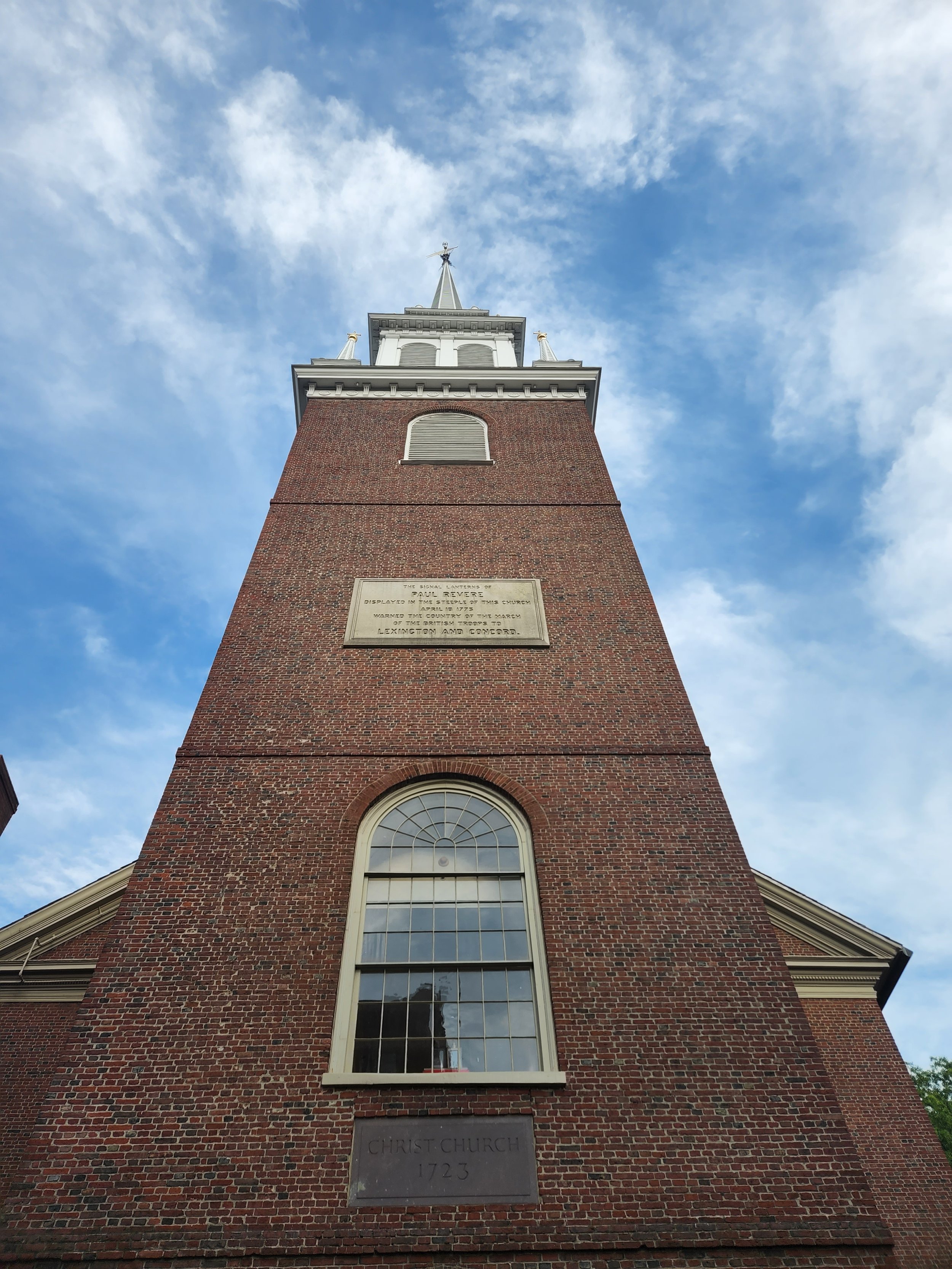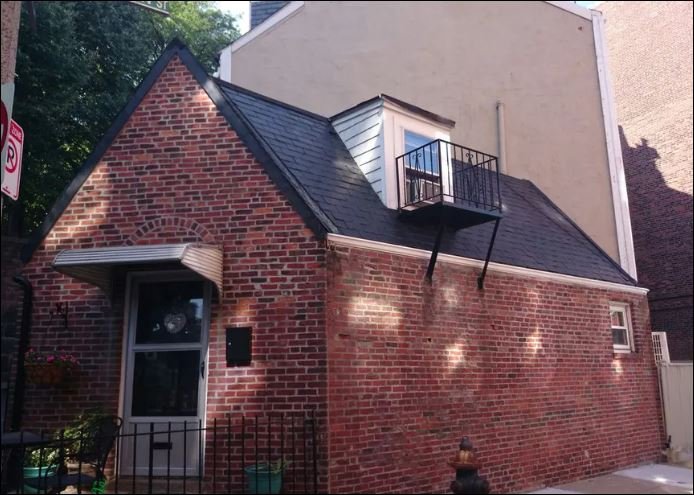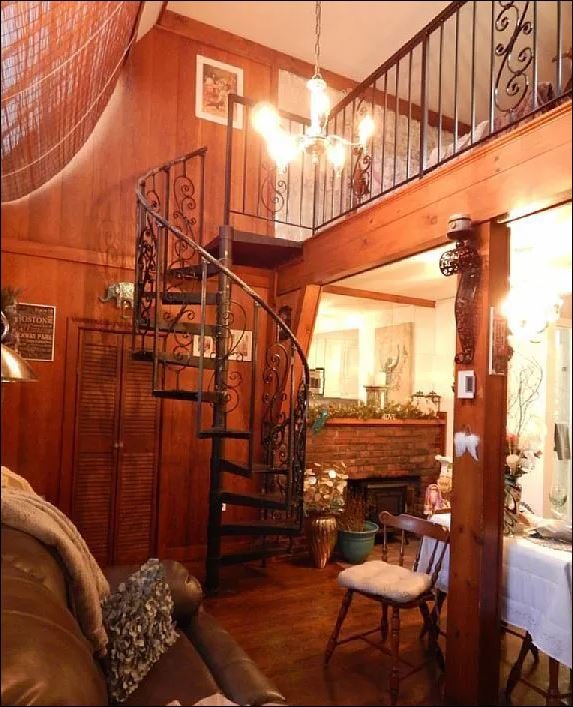North End Self-Guided Tour
Distance: 3.25 mi/5.25 km Duration: 1.5 hrs Cash: $5 entry to Old North Church if desired
The North End is the city's oldest residential community, where Europeans have continuously lived since the area was settled in the 1630s. Although immigrants were not exclusively Italian, the neighborhood grew into Boston’s “Little Italy,” and has popular Italian restaurants lining the streets. The neighborhood became fashionable in the 18th century due to artisans and merchants revitalizing the area.
Take a stroll through the narrow streets of this charming neighborhood to feel transported centuries back. Get a taste of Italy with a delicious pasta meal, and finish on a sweet note with a treat from the local bakery. The North End has many hidden parks and great views, and every step is filled with history.
Follow the path along the numbered stops on the map from start to finish. The guide below talks about the story behind each stop. You will visit famous locations such as the Old North Church and Copp's Hill Burying Ground, as well as quieter and lesser-known parts of the North End where tourists rarely venture.
Don’t want to read all this, or want even more? Book a private tour instead! For food, shopping, and other suggestions as you walk, check out our North End Neighborhood Guide!
Click here to open the map below on the Google Maps app on your phone.
Stop 1: The Rose Kennedy Greenway
A modern park with breathtaking views of both the Boston skyline and the North End. The area was dominated by an elevated highway until a $22 billion project called the Big Dig moved the highway underground, creating the Rose Kennedy Greenway in 2006. The Greenway marks the border to the North End. Previously, crossing into the North End required passing under the unsightly bridge, effectively isolating the neighborhood from other communities nearby. Now, entering the North End is just a pleasant walk across the Greenway, opening up the neighborhood for tourists and city residents alike.
Stop 2: North Square
North Square is one of the oldest public squares in the United States, and has been continuously occupied since at least the 1630s. Formerly known as Clark Square, it has been a community gathering place and bustling market area for nearly four centuries. Paul Revere’s house, the oldest wooden building in Boston, faces the square.
The square is currently used for outdoor dining by multiple surrounding restaurants. Enjoy a lovely Italian dinner with a stunning view of the North End skyline, or a backdrop of Boston’s downtown.
Take a look at the four bronze sculptures located at the center of the square, collectively called the “North Square Stories”:
North End Story Map - a relief of Boston in 2019. Can you find the Easter Eggs? (Hint: cannoli and garlic anyone?)
North Square View - a relief of North Square as it was in 1798. Who is the boy with the spyglass?
Fantastical Historical Nautical Monument - examine the markings on the statue’s base and peek through the five spyglasses to get a glimpse of important figures from Boston’s past. Do you know who they are?
What We Brought With Us - a monument dedicated to the immigrants of the area, brining hopes and dreams in nothing but a suitcase to start a new life in Boston.
Want to know the answer to these questions and more? To find out, take our North End Food and History tour!
Stop 3: Nazzaro Community Center
The Nazzaro Community Center Bath and Gymnasium (formerly known as the North Bennet Street Public or the North End Bath House) is one of the last remaining grand public bath houses, situated at the heart of Boston's oldest neighborhood. Many of the early tenement houses in the North End didn’t have baths or showers, forcing the residents to rely on a public bathhouse. The building evolved into a community center and a popular meeting place for after-school programs, seniors, community meetings, holiday parties and voting for over 100 years.
Stops 4-5: Paul Revere Statue & Mall
A statue commemorating Paul Revere’s midnight ride stands at the entrance of the beautiful Paul Revere Mall. The Old North Church and the tree lined park provide a perfect Revolutionary backdrop for photos during the day or night, summer or winter.
Don’t miss the beauty of the rest of this small urban oasis. The Paul Revere Mall, inspired by the Paseo del Prado in Havana, was built to create a direct sightline between two historic landmarks: The Old North Church and St. Stephen’s Church. The crucifix-shaped park is lined with a nine foot brick wall ornamented with plaques dedicated to famous historical figures associated with Paul Revere.
Take a brief pause on a bench in the shade next to the soothing fountain or take a few minutes to read the plaques around the park before proceeding.
Note the name on the fountain. Do you know who George Robert White was and why his name shows up on multiple statues and buildings around Boston? To find out, take our Boston Common & Public Garden or our North End Food and History tour!
Stop 6: Clough House
The Clough House was built around 1715 by master bricklayer Ebenezer Clough as a home for himself and his family. It is a rare example of a surviving brick rowhouse, and is one of the oldest buildings in Boston. Today it is home to Printing Office of Edes & Gill where you can attend free live demonstration of the colonial printing process. Pop into the Heritage Goods + Gifts gift shop for a souvenir made by family-owned companies with unique stories.
(Looking for more souvenirs? Check out the awesome locally-owned gift shop Loft & Vine, located on Salem Street, just a 3 minute walk from the Old North Church - again, seriously, no association with the shop, we just like them.)
Stop 7: Old North Church
Continue through the garden gate to the right of the Clough House if it is open (until 5pm most days). Otherwise, go around the block to find the Old North Church, formerly known as Christ Church. The steeple of this church is where the famous lanterns were hung by Paul Revere’s compatriots before his midnight ride to warn people that the troops from Britain were approaching and the war was starting. This ride was the origins of the famous poem that commemorated the phrase "one if by land, two if by sea." One lantern was to notify Charlestown that the British Army would march over the Boston Neck and the Great Bridge, while two lanterns would notify them that the troops were taking boats across the Charles River. The lanterns were hung in the steeple windows for just under a minute to avoid alerting the occupying British troops, although this was enough time for the Charlestown Patriots to notice the signal.
Today, the church is an active Episcopal Church with congregations every Sunday.
Stop 8: The Skinny House
This narrow four-story house, squeezed between two generic townhouses, has the "uncontested distinction of being the narrowest house in Boston." Also known as the Spite house, the origins behind the unusual architecture are unclear, but most agree that the truth falls somewhere between two stories.
A story of two brothers:
Two brothers inherited land from their deceased father. While one brother was away serving in the military during the American Civil War, the other built a large home, leaving the soldier only a shred of property that he felt certain was too tiny to build on. When the soldier returned, he found his inheritance depleted and built the narrow house to spite his brother by blocking the sunlight and ruining his view.
Or a more likely tale of the typical Boston temper:
Legend has it that an unnamed builder erected it to shut off air and light from the home of a hostile neighbor (who remains nameless) with whom he had a dispute. Believed to have been built after 1874.
Stop 9: Copp’s Hill Burying Ground - lower
The next three stops all take place in the Copp’s Hill Burying Ground. Copp’s Hill was Boston’s largest colonial burying ground. It is the second-oldest burying ground in the city, with records dating it to 1659. Named after shoemaker William Copp, the Burying Ground is the final resting place for merchants, artisans, and craftspeople who lived in the North End, as well as revolutionaries.
Turn right after the entrance and proceed down the steps to the lower part of the burying ground. There are no paths down there (you are allowed, don’t worry!), so watch your step as you stroll through the quieter grounds. Be on the lookout for signs marking participants of the Boston Tea Party.
Because of its height and panoramic vistas, the British used this vantage point to train their cannons on Charlestown during the Battle of Bunker Hill in 1775.
I want to bring special attention to one fascinating tomb plaque. I’ve been playing video games all my life, and if they have taught me anything, it’s that a plaque located in a peaceful, forgotten part of an old burying ground, bearing the name “John Smith,” in surprisingly pristine conditions after 200 years is suspicious at best. I believe this location activates a quest, but I have not figured out how to proceed in the main story line to unlock this for my character. Yet.
Stop 10: Copp’s Hill Burying Ground - scenic spot
Head to the rectangular paved center of the raised part of the burying ground. The view toward Charlestown and the water is spectacular, especially in the colder months when the lack of tree leaves allows for unobstructed views.
Stop 11: Copp’s Hill Burying Ground - African American area
A small community of free African Americans lived on the steep slope of Copp's Hill from the 17th to the 19th century. More than 1,000 of them may be buried in Copp’s Hill Burying Ground, primarily in the area along Snow Hill Street that has fewer surviving gravestones. This may be because the stones were removed or lost, or the memorials were made of wood that has since decayed. The local free African American community started about 1650, when a small number of slaves gained their freedom.
One of the more notable people buried in this area is Prince Hall (c. 1735-1807), who "was one of the most influential free Black leaders in the late 1700s," and was sometimes referred to as the “forgotten founding father.” After being freed from slavery at the age of 35, he assumed a leadership role in the African American community. He left a legacy of activism and fighting for equality:
Drafting petitions for the abolition of slavery
Protesting the slave trade and objecting to the exclusion of African American children from schools
Actively speaking out against the kidnapping of free Black men from Boston
Founding the African Lodge of the Honorable Society of Free and Accepted Masons of Boston, the first lodge of black Freemasonry.
When he died, it appears that he was buried near his first wife, Sarah Ritchie, who died when he was 34 (just a year before he was freed from slavery), as his name is inscribed on the back of her grave marker (D-16).
Stop 12: North End’s tiniest home
The 420-square-foot house at 54 Snow Hill Street is the North End’s tiniest standalone single-family. It’s also one of the 10 tiniest houses in Boston. Despite its tiny size, the house packs a lot of stuff! Inside includes a loft bedroom, a full kitchen, full bathroom, full living room, and even a fireplace! Outside has a small patio, and, of course, very quiet neighbors across the street.
Stop 13: Copp's Hill Terrace
Take a short break in this cool shaded urban retreat while you take in views of Charlestown, Bunker Hill Monument, and the marina across the bay.
By the 1890s, the North End was one of the most densely inhabited urban districts in the United States, packed with tenement buildings and many shops. Through the urging of councilman (and future mayor) John “Honey Fitz” Fitzgerald, Copp's Hill Terrace was built as the largest open space in this teeming district. However, the architect in charge of the job was not as elated as residents. After designing the terrace, Charles Eliot wrote in sadness to his wife in 1895 that Copp's Hill Terrace provided a recreation retreat for “the slum people . . . unclean beings, children pushing everywhere and swarming in every street and alley”.
A few decades later, a large crowd observed the destruction wrought by Boston's Great Molasses Flood of 1919 from the safety of this very terrace.
Stop 14: Langone Park & USS Constitution
Proceed down the terrace steps towards the water. Cross the street carefully. Enter Langone Park and Puopolo Playground directly across the street from the terrace, on the water. This is a favorite neighborhood hangout spot with bocce, basketball, baseball, a public pool, and chess tables.
This harbor walk stop offers a great skyline view that includes the Zakim bridge, Bunker Hill Memorial, the USS Constitution, and parts of East Boston.
The USS Constitution, also known as Old Ironsides, is the world's oldest ship still afloat, having launched in 1797. It is technically still a commissioned ship of the US Navy, and her crew are all active-duty service members, but today she is mostly used as a museum and heritage site. Every day at sunset, the crew fires a salute cannon which can be heard from this park.
The ship is also featured in the popular video game Fallout 4, set in post-apocalyptic Boston, in a quest called the “Last Voyage of the U.S.S. Constitution”.
Langone Park is the first park in Boston to integrate the standards set forth by the City of Boston’s Climate Resilient Design Standards aimed at building climate resilience to flooding, stormwater, and extreme heat. The Parks Department built an integrated seawall internal to the park, with overlooks and seating on an elevated boardwalk, which can be raised in the future to increase flood protection. The design incorporates structural elements including ground improvements, micro piles, and lightweight soils to elevate the park up to seven feet without affecting adjacent structures, properties, and the existing seawall.
"The Secret" - Boston's buried treasure
Note the red symbol on the map with the chest icon located at the home plate of the baseball field at the Langone Park. There is no visible marker in real life, but this marks the location of Boston’s real buried treasure! A local family made this incredible find after solving a puzzle from a 1982 book called “The Secret”. The hunt involves a search for twelve treasure boxes across United States and Canada, the clues to which were provided in the book. Anyone who uncovered one of the treasure boxes is entitled to exchange it for a precious gem; after the writer died in 2005, his estate assumed the responsibility of honoring the terms of the treasure hunt. As of October 2019, only three of the twelve boxes have been found.
Stop 15: Greenough Lane
Return back to the street in front of Copp’s Terrace and continue down the street, heading right from the terrace steps or left from Langone Park. Proceed a few blocks and be on the lookout for a street sign for Greenough Lane to your right. It will be past Rocco’s Cucina & Bar and before the first traffic light you encounter. The alleyway is narrow and looks like it should be an emergency exit to some fancy establishment. This is actually just an old public street - welcome to Boston’s historical layout! Proceed down the cobblestone alley to one of Boston’s best urban parks tucked away in a quiet part of the North End.
Stop 16: Charter Street Park
Quiet park tucked away in the residential part of the neighborhood. Come here to enjoy a cup of coffee and take a breather from the lively main streets of the North End.
The flowers are planted by local school children from the Eliot street across the street. Look out for the lower level gardens around the park. There is no particular significance to this park; it is simply a beautiful place to enjoy nature and some quirky architecture choices. Can you spot the extra balcony?
Stop 17: All Saints Way
Nestled in the North End of Boston, this alley is called All Saints Way. Behind an iron gate you can see the Wall of Saints: portraits ascending up the exterior brick wall of the adjoining building. This private collection has grown into a street-side shrine, with a display of the canonized including photos, statues, prayer cards, and tribute to Roman Catholic saints. While the shrine is a personal project on private property, the owner, Peter Baldassari, has been known to give quick tours, and a good portion of the collection is visible from the street, even if the gate is locked.
Stop 18: Harborwalk
Proceed down Battery Street toward the water and be on the lookout for the Battery Wharf Hotel signs. Walk along the hotel building to the the end of the wharf, away from the North End, to enjoy absolutely spectacular views of East Boston, the airport, and Boston Harbor. There are numerous wharves sticking out into the harbor, all with amazing views, this location is just a personal favorite.
The boat icon to the left of the Battery Wharf Hotel on the map marks the water taxi stop. A unique (although somewhat pricey) way to get around Boston, the taxi goes to both sides of the harbor, with stop in downtown and at the airport.
Make your way down to Columbus Park following either the more scenic water-adjacent Harborwalk or the quicker direct route via Commercial Street.
Stop 19: Rose Kennedy Rose Garden
This secluded space honors America’s Gold Star Mothers as well as Rose Fitzgerald Kennedy, mother of President John Fitzgerald Kennedy. American Gold Star Mothers is a veterans’ service organization that provides support for mothers who lost sons or daughters in World War II. Mrs. Kennedy became a Gold Star Mother on August 12, 1944, the day her oldest son, Joseph Patrick Kennedy Jr. was lost in action when his airplane exploded over the English Channel.
Stop 20: Columbus Park
A beautiful spot for pictures any time of day or year. During the summer, the path under the trellis is often lined with potted flowers and other seasonal decorations. The lawn will often be packed with tourists and locals alike enjoying the sun and the view. In the winter, the park is decorated and the trellis lit for the holidays.
Stop to take a picture, or watch the planes take off from the airport across the harbor!
Stop 21: Long Wharf
As originally built, the wharf extended from the shoreline adjacent to Faneuil Hall and was a third of a mile long, thrusting considerably farther than other wharves into deep water and thus allowing larger ships to tie up and unload directly to new warehouses and stores. Constructed by Captain Oliver Noyes, it was lined with warehouses and served as the central focus of Boston's great harbor. Today the wharf building is occupied by a hotel, several restaurants and shops. At the seaward end, there is a large plaza with extensive views of the harbor.
Due to recent climate change related flooding, Boston has been experiencing unusually high water in low lying areas of the city. The Long Wharf area has recently made headlines for the very noticeable levels of flooding in the area. Local news has reported “wicked high tides,” with the flooding making the wharf inaccessible during bad weather.
Stop 22: The Rose Kennedy Greenway
End the walk on the Greenway. There are a few places to go from here:
Check out Faneuil Hall Marketplace for shops and food. Go through the large arch under the building, heading away from the water.
Keep going down the Greenway, it continues on for a while, with each block offering something uniquely different.
On Saturdays from May 1 through October 31, this stretch of the Greenway hosts the local Greenway Artisan Market. Stay and browse!

































